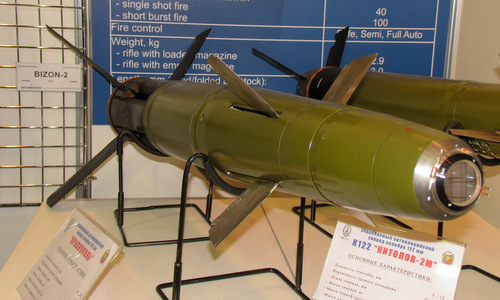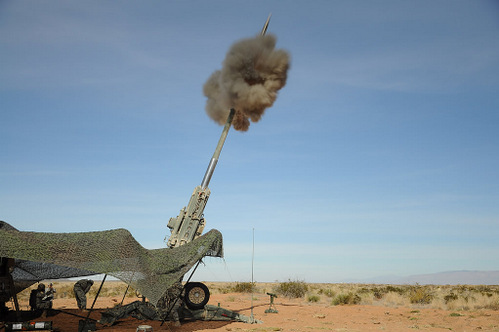Russia’s Krasnopol artillery shells: Bach Phat, a hit
On March 12, 2018, the Russian Ministry of Defense published a video of artillery drills in the Western Military District, in which units used Krasnopol laser-guided smart artillery shells “hundred-hundred-thousand-hit” Krasnopol. This video sparked a debate among military analysts about the power of Krasnopol compared to US guided artillery shells, especially the M982 Excalibur.
The United States was the first country in the world to deploy intelligent artillery shells with the appearance of the 155 mm caliber M712 Copperhead, laser-guided in 1982. The Soviet Union also introduced the 2K25 Krasnopol laser-guided artillery complex. caliber 152 mm then 4 years.

Krasnopol projectile with semi-active laser detector. Photo: Vitaly Kuzmin.
The two systems have similar guidance and combat features, but Krasnopol has the advantage of range when it can destroy targets up to 20 km away, compared to Copperhead’s 16 km. Both shells have an inertial guidance system (INS) to correct the flight path in the mid-phase, while the semi-active laser detector will be activated during the approach to the target to increase accuracy.
However, military expert Vadim Saranov said that early Russian and American smart artillery shells faced a series of technical barriers. “The shells only hit the target within the line of sight of the laser projection system. Artillery reconnaissance has to carry a bulky laser projection, command and communication complex close to the target for irradiation, which leads to danger. location was revealed,” Saranov said.
The automatic firing device for Krasnopol under the Soviet Union weighed 42 kg, requiring about three people to transport. Moreover, the process of projecting the laser at the target lasts 10-13 seconds, making artillery scouts vulnerable to enemy detection and retaliation.
Since the late 1990s, the development of guided artillery shells by Russia and the United States began to move in two different directions. Russian manufacturers continue to improve the combat performance of Krasnopol, helping it to reach a range of up to 25 km. Meanwhile, the Americans switched to equipping the GPS navigation system for the new version of smart artillery.
As a result, the Pentagon commissioned the M982 Excalibur artillery shell in 2006. Named after the legendary sword of King Arthur, the Excalibur shell was deployed during the campaign against insurgents in Iraq and made a good impression. with the commanders here. Approximately 92% of Excalibur bullets hit a 4 m radius circle around the target from a maximum distance of 40 km.
The upgraded Excalibur version has a range of up to 57 km. The GPS guidance mechanism helps American artillery to hit the target in difficult weather conditions, while the laser guidance system on the Copperhead series is completely useless if it encounters clouds or smoke.
However, the GPS navigation system is also the potentially fatal weakness of Excalibur. In the event that the satellite navigation network is disabled or in a highly jamming electronic warfare environment, the guidance system can be misaligned, causing the Excalibur projectile to no longer maintain accuracy.
GPS-guided shells are often less accurate when hitting moving targets, because their coordinates are constantly changing. In contrast, Krasnopol projectiles can easily follow the laser signal reflected from a vehicle traveling at a speed of nearly 40 km / h to destroy the target.
Realizing this shortcoming, Raytheon, the manufacturer of Excalibur ammunition, has started building a version of Excalibur S using a laser-guided mechanism since 2014. In contrast, Russia’s Tula Instrument Design Institute also studied the Krasnopol model. -D equipped with Glonass satellite navigation system.
“In the near future, both Russia and the United States will possess a series of smart artillery models to be used for each specific type of target,” Saranov said.

American soldiers fire Excalibur shells. Photo: Defense Industry Daily.
The biggest barrier preventing smart shells from being widely used is the high cost, when Excalibur and Krasnopol shells each cost about $50,000-70,000.
A cheap solution is to equip GPS sensors and miniature control wings on conventional shells, similar to the US JDAM bomb. In 2013, the Pentagon began deploying the M1156 Precision Guidance Kit, which turns a conventional 155 mm artillery shell into a smart weapon for less than $10,000 each. However, this type of ammunition has only half the accuracy of the Excalibur line.
Russia has also developed similar equipment for 152 mm shells and is expected to test it in the near future.
at Blogtuan.info – Source: danviet.vn – Read the original article here

